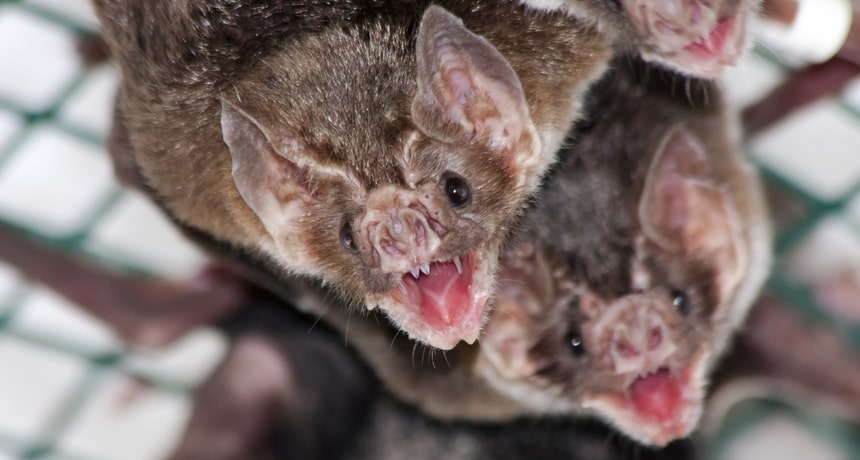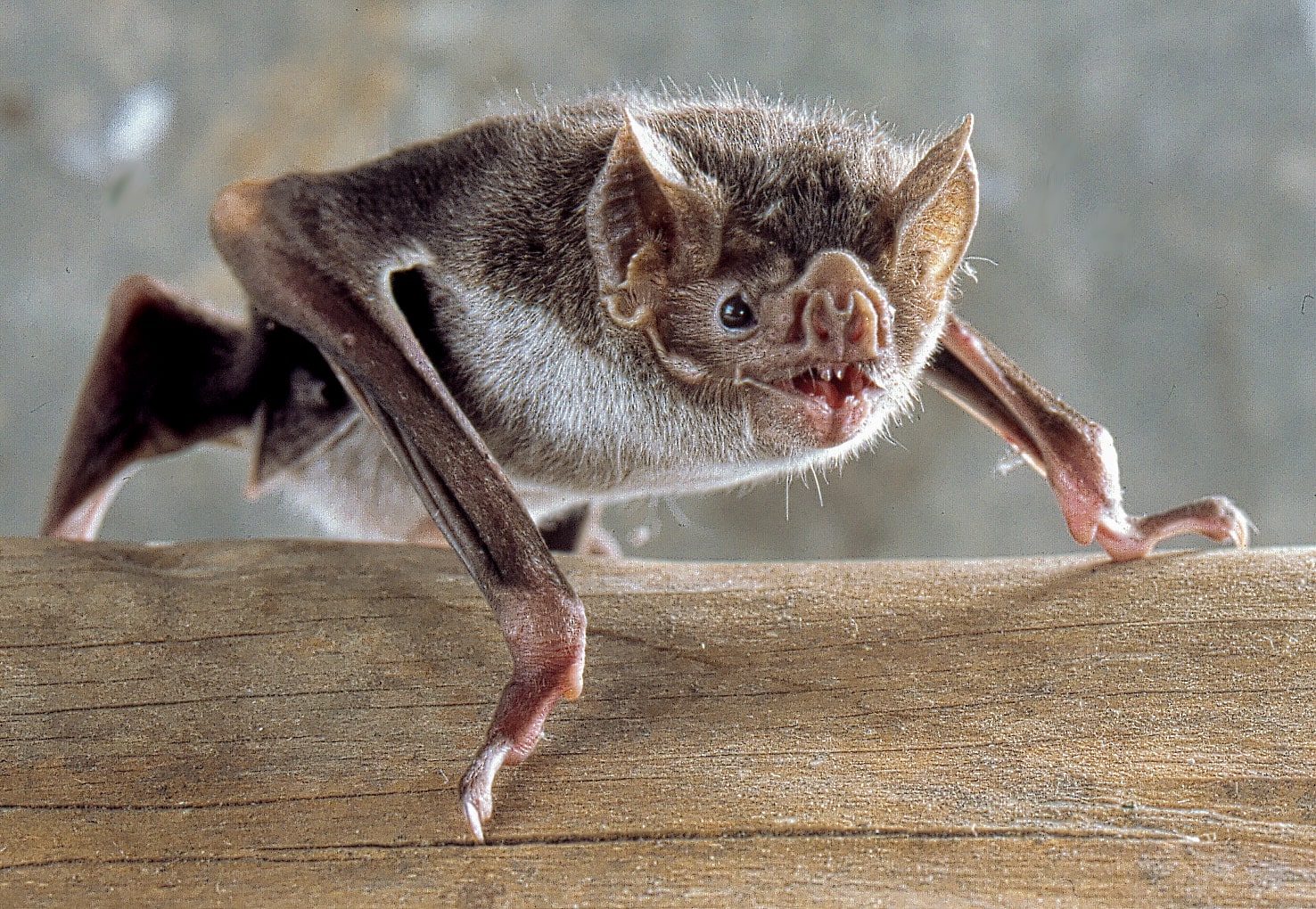 |
| About Vampire Bats, Blood-sucking Night Beings |
About Vampire Bats, Blood-sucking Night Beings. When they hear the word Dracula, people will usually immediately imagine a human-like figure who has a penchant for sucking blood and can turn into a bat.
Fortunately, the blood-sucking Dracula didn't really exist because it only appeared in works of fiction. But it is different with blood-sucking bats that actually exist and are better known as vampire bats.
Sounds creepy, right? But before readers feel scared, first read my article until it's finished. The vampire bat is the name for a type of bat that has a strange behavior: it sucks blood.
About Vampire Bats, Blood-sucking Night Beings
In European myth, the vampire is told as a corpse that re-sucks human blood, so the name was later adopted to refer to bats with similar eating behavior. There are three known species of vampire bat, all of which belong to the subfamily Desmodontinae.
 |
| About Vampire Bats, Blood-sucking Night Beings |
The three species are 1. Common vampire bat Scientific name Desmodus rotundus, 2. White-winged vampire bat Scientific name Diaemus youngi, 3. Hair-legged vampire bat Scientific name Diphylla ecaudata.
All vampire bat species are found only on the American continent, from Mexico to Chile. My own article will focus on the vampire bat of the Desmodus rotundus species, the most popular of the vampire bat species.
Vampire bats in general have a similar anatomy to other bats. On both sides of the body there are wings that were originally modified from the arms. Its legs are short so the bat cannot use it to walk or stand up straight. In contrast, bats can crawl or hang upside down when not flying.
Animals that perform the action while the victim is sleeping
Now we talk about the bat-eating behavior that earned him the nickname of a vampire: it sucks blood. Creatures that are often targeted by vampire bats because of their blood are livestock, such as cows.
Humans are also the target of common vampire bats, but don't worry too much. Vampire bats will only suck human blood if rare farm animals and humans sleep in the open.
 |
| About Vampire Bats, Blood-sucking Night Beings |
Vampire bats are nocturnal animals, meaning they are only active at night. During the day, these bats spend their time sleeping hanging upside down in places that are protected from the sun, for example in caves and empty buildings.
When night falls, then vampire bats come out of hiding to find food. The vampire bat guides itself as it flies by using reflected ultrasonic sound. But when it comes to choosing the right prey for its blood, vampire bats rely on their sense of sight and smell.
Vampire Bats Videos
When the vampire bat has found a suitable prey, the vampire bat will land and lie on its stomach near the prey. After that, the vampire bat will crawl slowly to climb the body of its prey.
The next thing the vampire bat does is make small bites on the skin of its prey which is often not felt by the sleeping victim.
Vampire bat's saliva is known as draculin and contains an anticoagulant substance that prevents blood clots. Thanks to the saliva, the blood from the bat prey's wounds will continue to flow so that the vampire bats can continue to suck it until it is full.
 |
| About Vampire Bats, Blood-sucking Night Beings |
Even if the vampire bat's prey awakens suddenly or unknowingly makes a move that could harm the vampire bat, the vampire bat can jump backwards quickly.
With the same technique, vampire bats can take off directly from the ground, as well as become the only bat species that can fly without having to jump from high places.
Milk Drinking Animals Become Blood Drinkers
Vampire bats are polygamous, meaning that a male can have several female partners. Mating occurs when the male bat climbs the female's body and bites the female's neck.
Female bats that have mated will enter a gestation period that lasts seven months. one female can carry only one fetus.
Newborn baby bats look similar to adult bats, but with a smaller size. Baby bats then live on their mother's milk until they are one month old. After that the mother bat will give the vomited blood to the baby so that the baby learns to eat blood.
At the age of five months, the young bats must live independently. The age of sexual maturity for vampire bats is ten months, while its maximum life span is estimated at up to twelve years.
Vampire bats have a maximum body length of nine centimeters, a maximum weight of 50 grams, and a maximum wingspan of 4 centimeters.
Vampire bats are often seen as pests by humans because the habit of sucking blood makes the victim's livestock become anemic and tire easily.
In more severe cases, vampire bats can also transmit rabies which can be fatal to its victims, including humans. As a result, these winged animals are often the target of killing local residents.
However, so far the population of vampire bats is still abundant, so that the killing activity carried out by humans is still considered not threatening its sustainability.
Vampire bats don't just have a negative impact on humans. The manure released by vampire bats can be used as organic fertilizer. Later, humans also began researching vampire bat saliva for medicinal purposes.
An example of a drug that uses vampire bat saliva as a raw material is desmoteplase, which is used to increase blood flow in stroke patients.
By: Ochie














0 comments